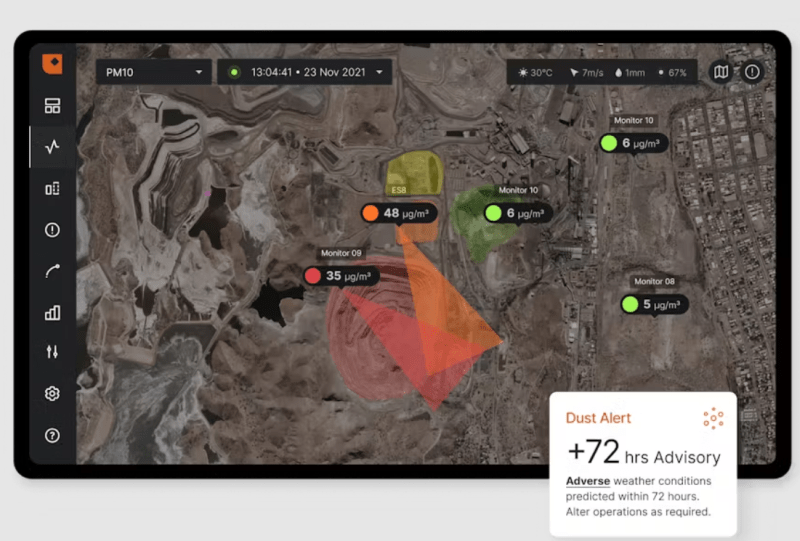Dust Monitoring’s Role in Environmental Regulation Compliance
Dust, whether generated by industrial processes, construction activities, or natural sources, can pose significant environmental and health risks if not properly managed. In many regions, strict ecological regulations govern dust emissions to protect air quality and public health. As such, the role of dust monitoring in compliance with these regulations is paramount. In this article, we’ll explore the importance of dust monitoring in ensuring compliance with environmental laws and its impact on safeguarding the environment and human health.
Understanding Environmental Regulations
Environmental regulations about dust emissions vary from region to region. Still, they aim to limit particulate matter (PM) in the air to protect air quality and public health. These regulations often set specific standards for permissible levels of PM10 (particles with a diameter of 10 micrometres or less) and PM2.5 (particles with a diameter of 2.5 micrometres or less) in the atmosphere. Industries and activities that generate significant dust emissions, such as mining, construction, and manufacturing, are subject to stringent monitoring and compliance requirements.
The Role of Dust Monitoring
Dust monitoring plays a crucial role in helping industries and businesses comply with environmental regulations by providing accurate data on dust emissions and concentrations in the air. By continuously monitoring dust levels near industrial facilities or construction sites, companies can assess compliance with regulatory limits and proactively mitigate dust emissions when necessary.
Critical Components of Dust Monitoring
Effective dust monitoring involves using specialised equipment and techniques to measure and analyse airborne particulate matter. This may include
1. Air Quality Monitoring Stations
Fixed or portable monitoring stations equipped with particulate matter samplers and analysers are deployed in areas prone to dust emissions. These stations collect data on dust concentrations over time, providing insights into trends and fluctuations in air quality.
2. Real-time Monitoring Devices
Advanced real-time dust monitors use cutting-edge technology to provide instant measurements of dust levels in the air. These devices offer immediate feedback on dust emissions, allowing companies to take prompt action to address any exceedances of regulatory limits.
3. Meteorological Data Integration
Dust monitoring is often complemented by meteorological data, such as wind speed and direction, humidity, and temperature. Integrating meteorological data into dust monitoring efforts helps assess the dispersion and transport of dust particles, enhancing the accuracy of compliance assessments.
Benefits of Dust Monitoring for Compliance
1. Early Detection of Non-Compliance
Continuous dust monitoring enables early detection of potential non-compliance with environmental regulations. By promptly identifying exceedances of regulatory limits, companies can implement corrective measures to mitigate dust emissions and avoid regulatory penalties.
2. Data-driven Decision-making
Dust monitoring provides valuable data that can inform decision-making processes related to dust control measures and environmental management strategies. By analysing trends and patterns in dust emissions, companies can optimise their operations to minimise environmental impacts and ensure long-term compliance with regulations.
3. Demonstrating Due Diligence
Proactive dust monitoring reflects a company’s commitment to environmental responsibility and regulatory compliance. By maintaining comprehensive records of dust monitoring data, companies can demonstrate due diligence in managing dust emissions and mitigate potential legal and reputational risks.
Challenges and Considerations
While dust monitoring is essential for compliance with environmental regulations, it poses particular challenges and considerations for businesses
1. Cost of Monitoring Equipment
Investing in high-quality dust monitoring equipment and maintenance can be costly for small and medium-sized enterprises (SMEs). However, the long-term benefits of compliance and risk mitigation often outweigh the initial investment.
2. Data Interpretation and Reporting
Interpreting dust monitoring data and ensuring compliance with regulatory requirements can be complex, requiring expertise in environmental science and regulatory compliance. Companies may need to invest in training and resources to manage dust monitoring programs effectively.
3. Integration with Dust Control Measures
Dust monitoring should be integrated into broader dust control measures and environmental management systems to ensure effective mitigation of dust emissions. Companies should develop comprehensive strategies that address the root causes of dust emissions and prioritise prevention and control measures.
Conclusion
In conclusion, dust monitoring is vital in ensuring compliance with environmental regulations governing air quality and dust emissions. By continuously monitoring dust levels in the air, industries and businesses can assess compliance with regulatory standards, identify potential non-compliance issues, and implement timely corrective measures. Dust monitoring helps protect the environment and public health and demonstrates a company’s commitment to environmental responsibility and regulatory compliance. By investing in effective dust monitoring programs, businesses can mitigate risks, enhance operational efficiency, and uphold their social and ecological responsibilities in today’s increasingly regulated world.
Article Submitted By Community Writer

